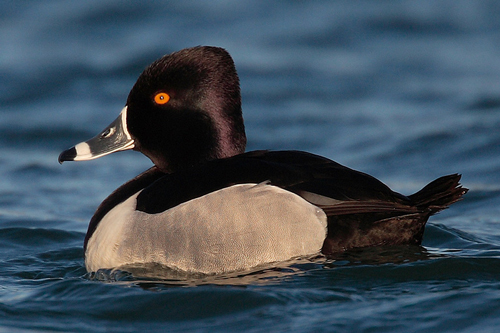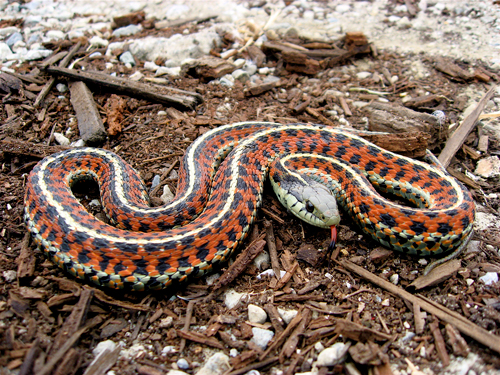The main group joins the hunters who are already on Deer Island in present Oregon. They spend the day hunting or repairing leaky dugout canoes. They are visited by some of the Cathlapotle Nation from across the river, and Lewis describes the red-sided garter snake and ring-necked duck, both new to science. The hunters have difficulty keeping birds away from the deer they kill.
Repairing Canoes at Deer Island
by Yellowstone Public Radio[1]Originally aired weekdays by Yellowstone Public Radio during the Bicentennial observance of 2003-2006. Narrated by Hal Hansen. Scripts by Whit Hansen and Ed Jacobson. Produced by Leni Holliman. © … Continue reading
Cathlapotle Nation
Since we landed here we were visited by a large canoe with ten natives of the quathlahpahtle [Multnomah] nation who are numerous and reside about seventeen miles above us on the lard. side of the Columbia, at the entrance of a small river. they do not differ much in their dress from those lower down and speak nearly the same language, it is in fact the same with a small difference of accent.
—Meriwether Lewis
Repairing Canoes
after ten A. M. it became fair, and we had the canoes which wanted repairing halled out and with the assistance of fires which we had kindled for the purpose dryed them sufficiently to receive the pitch which was immediately put on them
—Meriwether Lewis
Ring-necked Duck
one of the hunters killed a duck which appeared to be the male…the back tail and covert of the wings were of a find black with a small addmixture of perple about the head and neck.
—Meriwether Lewis
Red-sided Garter Snake
we saw a great number of snakes on this island they were about the size and much the form of the common garter snake of the Atlantic coast and like that snake are not poisonous. a narrow stripe of a light yellow runs along the center of the back, on each side of this stripe there is a range of small transverse oblong spots of a pale brick ret which gradually deminish as they receede from the head and disappear at the commencement of the tail.
—Meriwether Lewis
The Hunters’ Tally
the men who had been sent after the deer returned and brought in the remnent which the Vultures and Eagles had left us; these birds had devoured 4 deer in the course of a few hours. the party killed and brought in three other deer a goose some ducks and an Eagle. Drewyer also killed a tiger cat [bobcat]. Joseph Fields informed me that the Vultures had draged a large buck which he had killed about 30 yards,
—Meriwether Lewis
Weather Diary
Aspect of the weather at Rise
Wind at rise
Aspect of weather at 4 O’Ck P. M. Wind at 4 OCk. P. M. cloudy after rain N. fair after fair & rain S. W rained by showers greater part of last night frequent showers in the course of the day. this evening we saw many swan passing to the North as if on a long flight. vegitation is not by several days as forward here as at Fort Clatsop when we left that place. the river rising fast, the water is turbed; the tide only swells the water a little, it does not stop the current. it is now within 2 feet of it’s greatest hight.
—Meriwether Lewis[2]To assist the reader, the editor of this web page has omitted the “Day of the Month” column and spelled out some abbreviations.
Notes
| ↑1 | Originally aired weekdays by Yellowstone Public Radio during the Bicentennial observance of 2003-2006. Narrated by Hal Hansen. Scripts by Whit Hansen and Ed Jacobson. Produced by Leni Holliman. © 2003 by Yellowstone Public Radio. |
|---|---|
| ↑2 | To assist the reader, the editor of this web page has omitted the “Day of the Month” column and spelled out some abbreviations. |


